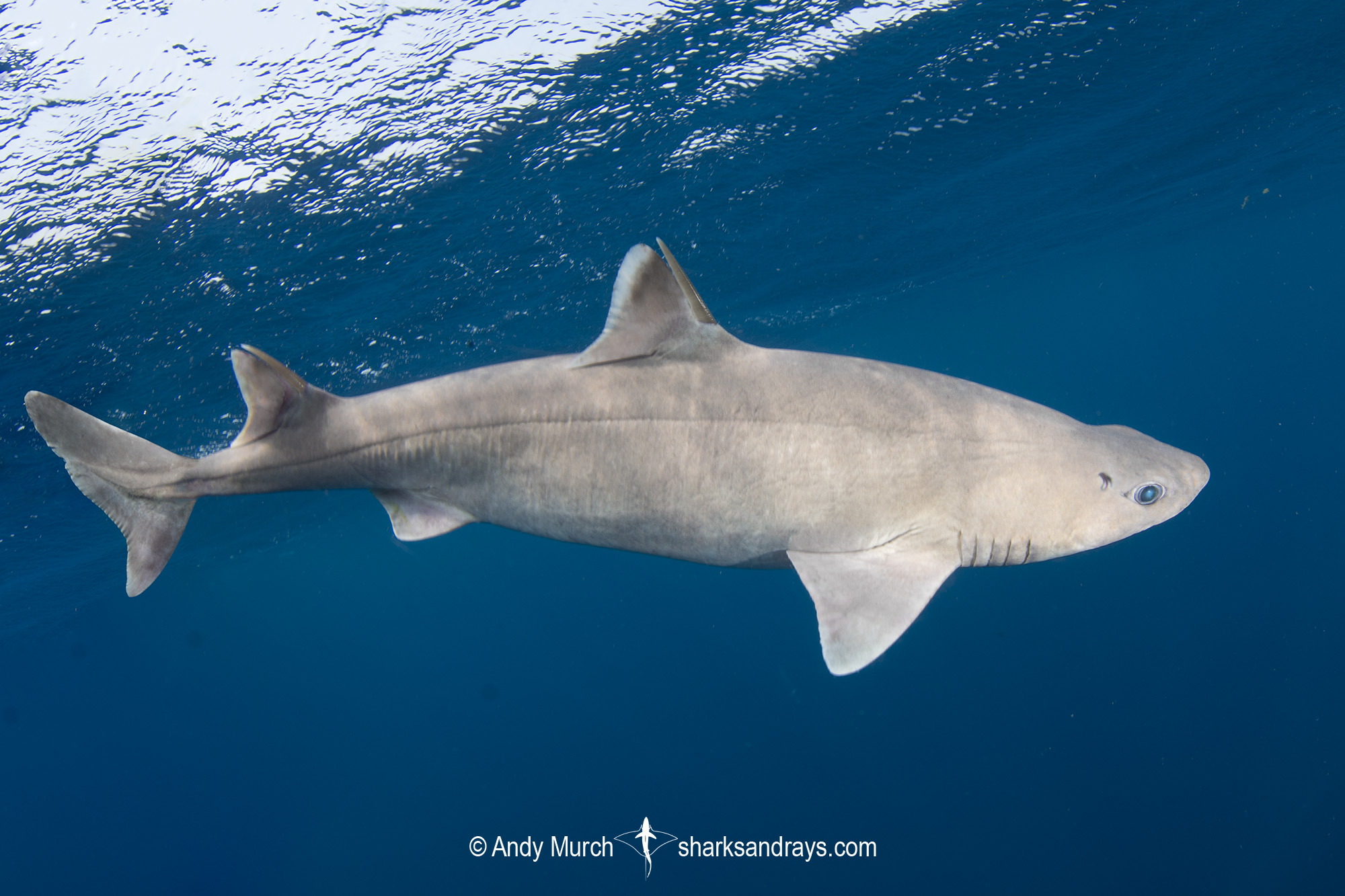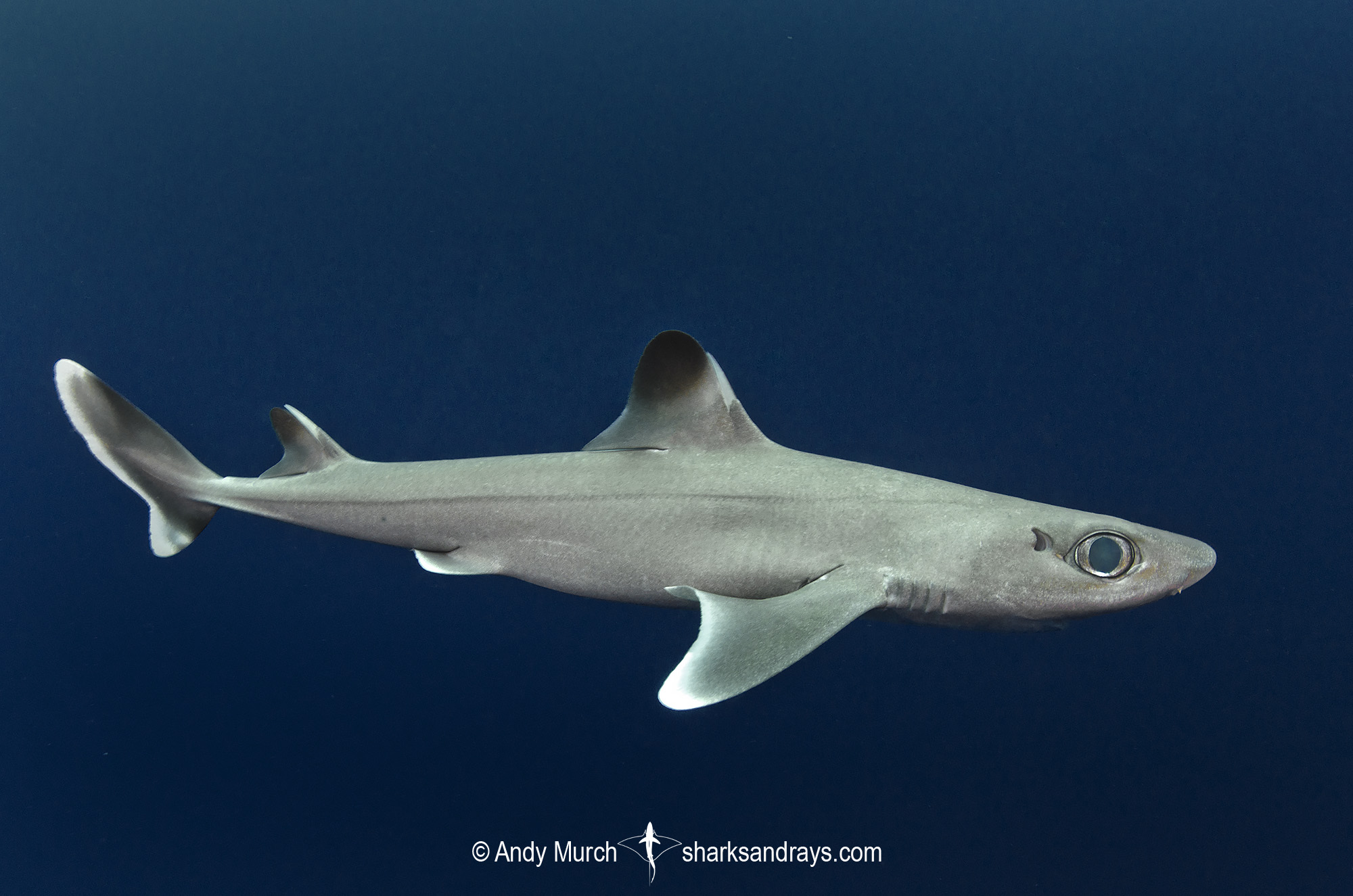Common name(s)
Roughskin Spurdog, Roughskin Spiny Dogfish.
Identification
A relatively stout squaloid shark with a snout length approximately equal to mouth width, and a broad anterior nasal flap. Two dorsal fins with long anterior spines. First dorsal fin origin significantly posterior to free rear tip of pectoral fin. Second dorsal almost as large first. Spine on second dorsal fin more curved than spine on first dorsal fin. All fins have white posterior margins; more pronounced on dorsal fins and lower caudal lobe. Pectoral fins broad with rounded free rear tips.
Dorsal cororation grey or greyish-brown and unmarked. Ventrum pale.
Size
Maximum recorded length 118cm but usually 90cm. Size at birth 25-28cm.
Habitat
A tropical/sub-tropical deepwater species from the continental shelf and upper slope. 73-600m. Sometimes near bays and river mouths.
Distribution
The roughskin spurdog has a wide but fragmented range in the western Atlantic, Indian Ocean, and central Pacific. The Atlantic and Pacific populations are probably different species.
Conservation Status
DATA DEFICIENT
The Roughskin Spurdog is not known to be targeted in any fisheries, but may be incidentally caught in demersal trawl or longline fisheries. The species is reported from some regions with limited fishing effort. For example, in the United States Gulf of Mexico, Royal Red Shrimp (Pleoticus robustus) trawl fisheries operate on relatively restricted fishing grounds adjacent to home ports at depths of 250–550 m (Stiles et al. 2007, Reed and Farrington 2010). The bottom fish fishery operating in the Hawaiian Archipelago targets deep-water snappers and groupers (Etelis and Pristipomoides spp) at depths <400 m depth (DLNR 2019). Off southern Africa, the Roughskin Spurdog has been reported in very low numbers (annual average catch < 1 t) from prawn trawl fisheries between 2010–2012 (da Silva et al. 2015).
The species has also been reported from parts of Central and South America that have undergone intensive fishing activity. Industrial trawling for shrimp and demersal species was introduced in the 1940s and increased rapidly from the 1960s until the 1980s when there were 450 registered vessels (Mendoza 2015). Artisanal fisheries dominate the catch in Venezuela, employing a number of gear types. Deep-water fisheries began in 2000 and have expanded geographically, and some stocks have collapsed (O. Lasso pers. comm. 30/05/2018). Off Brazil, deep-water fisheries along the southeast and southern coasts developed in the late 1990s to remove some pressure from depleted coastal resources (Dallagnolo et al. 2009). Four main fisheries (hook and line, demersal gillnet, pots, and demersal trawls) targeted a variety of species including monkfish (Lophyus gastrophysus), the Argentine Hake (Merluccius hubbsi), and deep-water shrimps (family Aristeidae) at depths of 200–1,000 m+. The species has been landed as frequent catch from bottom longline fisheries, and occasional catch from demersal gillnet and trap fisheries from southern Brazil (Mazzoleni and Schwingel 1999). Fishing activities mostly ceased in 2006, but may return at any point in the future due to the dynamic nature of Brazilian fisheries.
Citations and References
Finucci, B., Cheok, J., Cotton, C.F., Kulka, D.W., Neat, F.C., Rigby, C.L., Tanaka, S. & Walker, T.I. 2020. Cirrhigaleus asper. The IUCN Red List of Threatened Species 2020: e.T60209A3092852. https://dx.doi.org/10.2305/IUCN.UK.2020-3.RLTS.T60209A3092852.en. Downloaded on 08 January 2021.
Reproduction
An aplacental viviparous species. Litter size 18-23.
Diet
Feeds on bony fishes and cephalopods.
Behavior
Unknown, but heavy body indicates a sedentary lifestyle.
Reaction to divers
Unknown but probably very shy. The roughskin spurdog occurs in water deeper than
Diving logistics
The roughskin spurdog occurs in water to deep to be encountered by recreational divers.
Similar species
Spiny Dogfish Distinguished by white spots on lateral line and position of first dorsal fin origin which is close to the pectoral fin insertions.
Cuban Dogfish Distinguished by first dorsal origin over pectoral fin, black-tipped dorsal fins, and larger eyes.
The Shark Forum
Let’s talk about sharks





